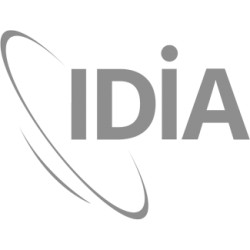Radio telescopes are very complex instruments. Unlike telescopes using mirrors that measure visible or infra-red light, most modern radio telescopes are made of many antennae, each acting like a pixel. Combining the signals of each of the antennae, like the 64 dishes of the MeerKAT telescope is very complex and adding them into what is called the “primary beam”, is equivalent to calculating an oddly-shaped equivalent mirror. This equivalent mirror depends on many things, like the frequency of the radio signals measured, but mainly, on the layout of the antennae. The MeerKAT dishes are laid out in a spiral. This has many technical advantages. Other radio telescopes are movable into different configuration. Either way, the problem of calculating what we actually see is very complex and one of the reasons why we need such powerful computing power to process the signals from radio telescopes.
One can add another level of complexity to this problem, which is the polarization of the radio signals detected by a radio telescope. Polarization of light tells us about physical phenomena that have resulted in the polarization. A simple way to understand polarization is to notice that polarized sunglasses help with limiting the the glare due to reflected light. This is because the surface on which light is reflected gives light a polarization parallel to that surface. Assuming that most surfaces are horizontal, polarized sunglasses block horizontally polarised light, but not light polarized in other directions. This results in most light coming through, but most reflections being blocked. Similarly, other phenomena lead to the polarization of radio waves, and by measuring that polarization, as opposed to blocking it, we are able to learn more from the waves we detect.
In this new paper, author Srikrishna Sekhar, Preshanth Jagannathan, Brian Kirk, Sanjay Bhatnagar and Russ Taylor propose a new algorithm to understand the tiny effects due to the fact that all antennae of a radio telescope see a very slightly different radio light, which varies as a function of time, radio frequency, and polarization. It is the third paper in a series that develops algorithms to better understand the signal from radio telescopes and enables radio astronomers to use more of the signal, increasing the ability of those telescopes to detect new objects and phenomena in the universe.
References:
Direction Dependent Corrections in Polarimetric Radio Imaging III: A-to-Z Solver — Modeling the full Jones antenna aperture illumination pattern, Srikrishna Sekhar, Preshanth Jagannathan, Brian Kirk, Sanjay Bhatnagar, Russ Taylor, Submitted to AAS, arXiv:2107.10009
Direction Dependent Corrections in Polarimetric Radio Imaging I : Characterizing the effects of the primary beam on full Stokes imaging, P. Jagannathan, S. Bhatnagar, U. Rau, A. R. Taylor, 2017 AJ 154 56 https://iopscience.iop.org/article/10.3847/1538-3881/aa77f8
Direction-dependent Corrections in Polarimetric Radio Imaging. II. A-solver Methodology: A Low-order Solver for the A-term of the A-projection Algorithm, P. Jagannathan, S. Bhatnagar, W. Brisken, and A. R. Taylor, 2018 AJ 155 3, https://iopscience.iop.org/article/10.3847/1538-3881/aa77f8
